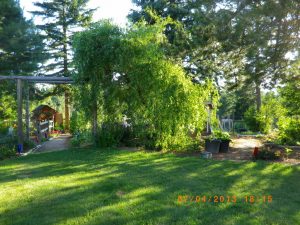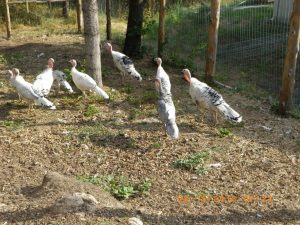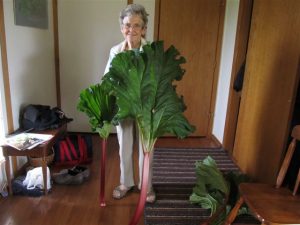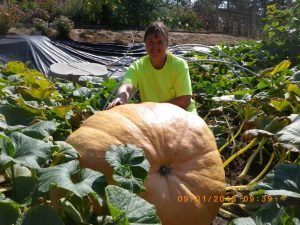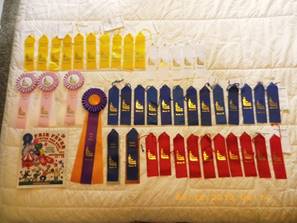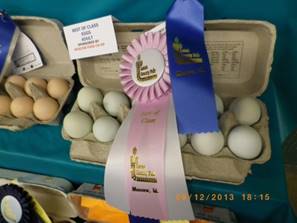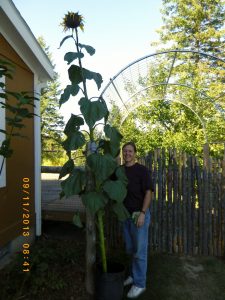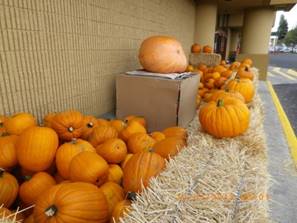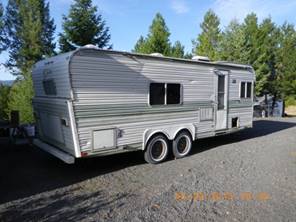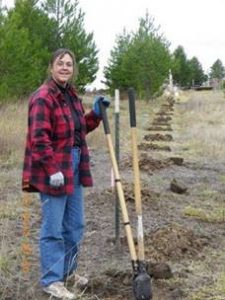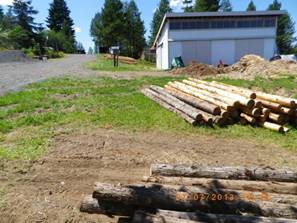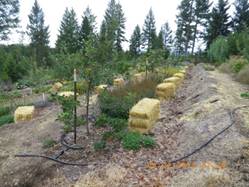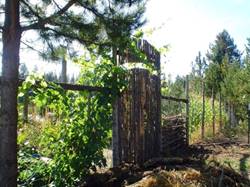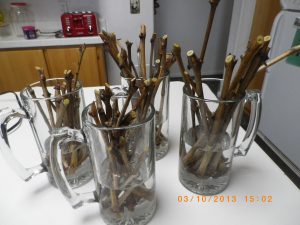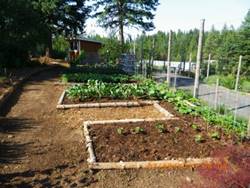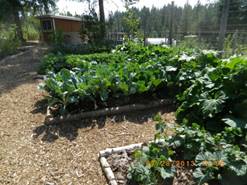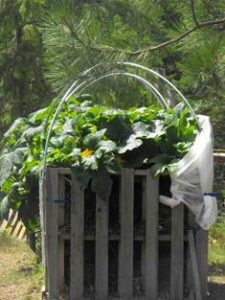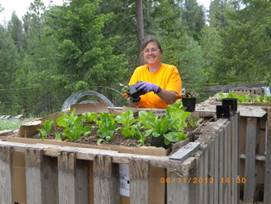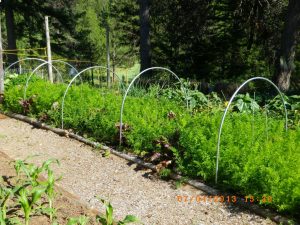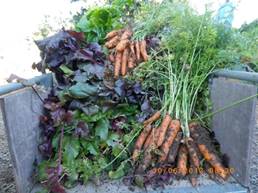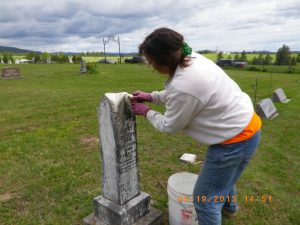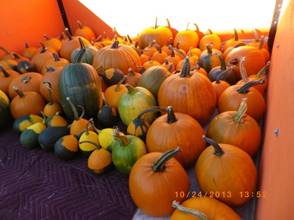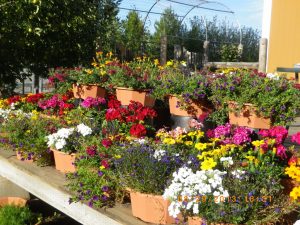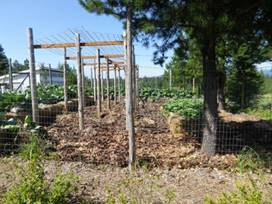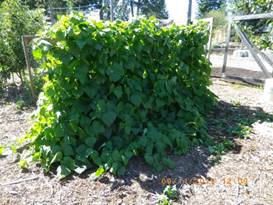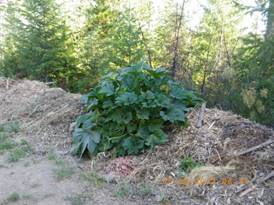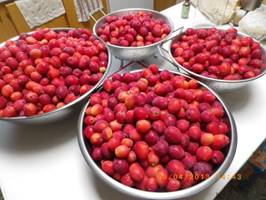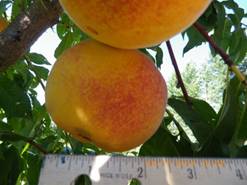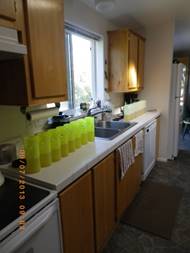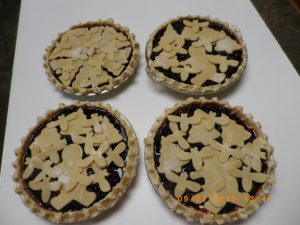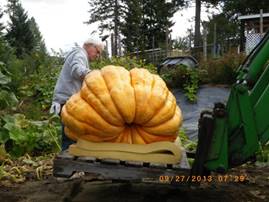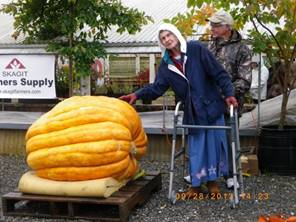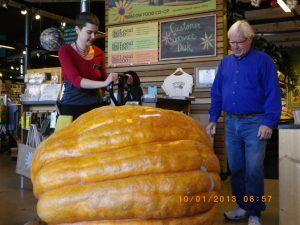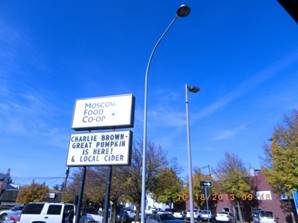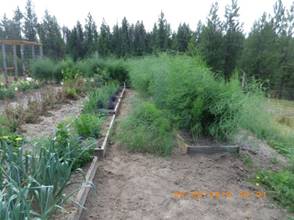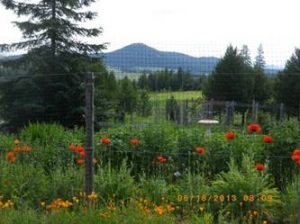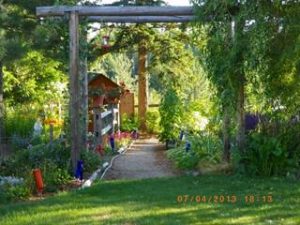Happy Holy Days Everyone!
Dr. Moffat’s 2013 Christmas Letter
I know, I know, it’s only November but it seems everyone is putting up their Christmas displays already. They were even running Christmas shows on TV as of November 1st! Ridiculous, but I also know that if I don’t get this out to you shortly, I won’t have time to do it during December.
I’ve completed my inventory, refreshed my shelves, I’m composing another newsletter and am about ready to enter all my yearly invoices into an excel database for our accountant. Each year I have a Black Friday Special the weekend after Thanksgiving where any consult appointments made that weekend for the months of Dec/Jan/February are half off services. It’s a zoo. This year will be my 3rd year and it seems to get busier each year. Hopefully I can get things completed before the melee starts.
So, a year in review for Michael and I. . .thought I’d include pictures since this is going out in email form this year. Please include me on your Christmas card list. I love reading about your lives and consider you my extended family. We decorate our house with the Christmas cards we receive. They really give us warm fuzzies.
I spent more time working on the farm this year than usual. Michael and I were in an auto accident in February and our truck was totaled. I just loved that truck. Anyway, I healed up physically within a couple of months but Michael didn’t fare as well. He spent months going to doctors and physical therapy. Meantime I was doing the heavy work. It was a lot of work and just physically exhausting. Some of our goals (like promoting our flower business) didn’t get done.
Since there was a local shortage of pasture raised turkeys, we decided to raise some this year. Thank goodness we started small. They were so cute and the poults were easy to sell because ordering them from hatcheries has about a 40% mortality rate. Michael hatched out some Royal Palm eggs we purchased from a local breeder and sold the males as babies, then we purchased a few young poults from a woman who needed to move to a new location. We ended up with 8 birds including a Blue Slate. Both breeds are very beautiful. They got so large we had to cut a new door into the chicken house we had them in. Here’s a photo of them in their pen. Boy do they eat up the grass!
Once they reached about 4 months of age there were turkeys flying out of the pen every day. Maggie didn’t like that and tried to keep them in the pen but one day she accidentally killed one. I decided to salvage the meat, but when I went over to pick it up I saw that it was covered in yellow jackets. I decided they could have it. They devoured the carcass (about 12 pounds of it) in two days. We ended up selling the survivors as young adults. One of our friends purchased three of them to use as breeding stock. Months later, when we went for a visit, those turkeys recognized us and started calling out a hello and wanting to know where their grass and clover treat was. I had no idea they would remember us. . . and we didn’t even bring them any clover for treats! I think we may raise more turkeys in the future but first we’ll have to build higher fences and maybe have a covered area they can’t fly out of.
We had a good crop of rhubarb in the spring. When I sent her a photo of my blackberry picking partner/neighbor, Gen Long with some of stalks of rhubarb we grew, my mom said I should have turned photos of it into the Guinness Book of World Records .
Giant Pumpkins: Michael and I grew monsterously freakishly amazing large pumpkins this year. We had visions of them reaching 1000 pounds or more but we were not prepared for them growing so fast. They squashed their own vines cutting off their nutritional supply. We didn’t notice what was happening until they were about 300 pounds and then it was too late to move them. I tried moving mine to slip a sandbag under it, but the stem cracked. I ended up burying the stem in hopes it would continue to grow. I harvested mine for the Latah County Fair and won Best of Show. We then donated it to our local Rosaure’s grocery store because they sponsored the prize for the biggest pumpkin at the fair this year. We taped a giant pumpkin seed on the bottom of each of the other contestant’s entry forms hoping to stimulate some interest in a little competition next year.
Last year at the Fair we noticed the number of entries was WAY down—especially for the flowers section so I went out into the garden and spent an entire day searching for perfect flowers, herbs and vegetables to enter. We came up with 47 entries and got 43 ribbons.
Our eggs and Artemesia vulgaris won Best of Class and the Moscow Garden club sent us a special letter asking us to come back next year.
I felt pretty proud of this volunteer sunflower entry we turned into the fair for the tallest sunflower but was wow-ed when I found it was the shortest of 12 entries. The tallest one—almost three feet taller—was also a volunteer. Can you imagine that?
We gave my pumpkin to Rosaures with the caveat that we get the seeds back when they were done with pumpkin sales. It looks small in the picture, but it’s on top of a bunch of full-sized pallets. Well, one night two weeks before Halloween, a group of 7-8 dishonorable characters snuck in and formed a line crouching down under the view of the security camera and stole a bunch of the little pumpkins passing them down the chain of vandals. They had their eye on the “mother load” apparently because one of the larger guys tried to pick it up and gave a grunt. Another guy said, “I’ll help you” and they both tried to lift the thing and got it just over the edge of where she sat and then it slipped out of their grasp and they dropped her. Rosaure’s filed a police report but we haven’t heard if anything came from that. I wonder if they realize what it actually costs in time and money to grow something that big. I was so bummed and discouraged. Fortunately we were able to collect the pieces and save the seed for next year.
Michael and I have come to the conclusion that we’re not getting any younger (could it be the physical abuse we’ve been ticking up these last few years?) Anyway, we’re ready to explore the possibility of hiring an intern, but we didn’t have any place for an intern to stay. I came up with the idea to place an ad to trade my FIR sauna which we didn’t have room for in our home for a trailer. After a few inquiries we settled on this 8 x 24 foot camper. It needs work inside before it will be habitable, but I think it’s do-able and it is a step in the right direction for us. I’m going to paint it forest green and plaster some trees on it so that it will blend in with the property a bit. Maybe we can use it as a guest room when it’s not occupied by an intern.
Our biggest project this year was fencing the knoll where our house sits. After years of trying to grow gardens and food and having deer, elk, moose, cattle and last year a herd of 400 sheep eating everything, we decided this would be the best option. The knoll is about 5 – 6 acres. We figured the wildlife can have the other 35 acres. We’ve planted pasture and forage grass in the forest for the wildlife.
Well, I really had no idea how big a project it was going to be. I hadn’t factored in the auto accident and Michael not being able to physically help much. He could peel a couple of posts each day before he had to lay down but pretty much I finally determined “if it is to be, it’s up to me,” so I hunkered down for the long haul. I tried to dig about 5 post holes per day and looked at it like my morning exercise, but sometimes I got a few days behind and had to use entire weekends to catch up. About half of the postholes were dug in 90 degree heat of the afternoon after consults were done for the day. I was very determined and very committed.
Michael saw how large an area I had my eye on and didn’t say anything for a few weeks but one day he finally freaked out. “Stop! You can’t possibly complete this project this year. We have to make it smaller!” By that time I was 3/5ths of the way done and on the back side of the knoll in the shade of the forest completely in my own world. I had gotten to the part of the property where I needed to focus on completing 8 feet at a time because there was so much logging debris. I was focusing on small baby steps each day and very determined to get it done. I just looked up at him and started to cry. “NO, we can do it. I know I can get this done. I just need to focus.” He finally talked me into putting out an SOS on our farm Facebook page asking for help. One woman came over, saw the project and said, “Boy, you’re ambitious.” Since she was in her 70’s she decided the best way to help would be to bring us a meal which we gratefully accepted. Then Sarah Stanton came over with her boys. She took a look at the project and said, “Boy, you’re ambitious” (Uh oh I was thinking. Not again.) She put her kids to work stripping logs—my eyes nearly popped open when she handed her 5-year-old the drawing knife and told him to be careful and then said. “You need big equipment. Where’s your phone?”
She called another neighbor who had a CAT. He was here within an hour, took a look at the job and said, “Hmmm. You’re quite ambitious.” Finally I asked, “Is this a good thing or a bad thing because I’m getting a bit tired of hearing that same sentence over and over. You know Madonna’s Blond Ambition Tour? Well, I’m calling this the Brunette Ambition Project.” Long pause. “It’s a good thing.” He said.
The next evening he was over with his CAT, spent two ten hour days cutting a road where I needed to dig more post holes and was out of there. He had pushed whole trees and huge stumps to the downhill side of the new road, leaving us with lots of potential firewood and no one to saw it up.
Michael taught our friend Del to use a chainsaw and to chain up the trees to the truck for Michael to pull out as I worked on the phone and did consults. At one time Del said, “I think your tire is going flat.” “Why do you say that Del?” asked Michael. “Well, I can hear the air coming out” she relayed. Michael took a look, then she told me he yelled at her “GET IN THE TRUCK NOW!” It took her aback because Michael never yells. She jumped in the truck no questions asked. Michael got them back up to the garage before the tire went flat so they wouldn’t be stuck in the woods. She was laughing about that the entire day. We gave her the wood in exchange for the work.
The two young people we attempted to hire were often needed on their own farms and not always available when needed. Since my schedule was not as flexible as theirs needed to be, I ended up digging 256 post holes by myself, by hand. We borrowed a tractor-post hole digger for the last 81 holes, but the ground was so hard it didn’t work all that well and I ended up digging much of each hole by hand as well.
Michael taught me how to use winches and he used our baby tractor to haul the rolls of wire down the hill. Totally physically exhausting, but over the months we’ve pretty much have most of the fencing up and now need to build about 18 gates and put 5 lines of wire above the 5 foot fencing to make it tall enough for the deer not to want to jump over. That will come next year.
As I mentioned earlier, my eyes popped open when Sarah offered her 5-year old the draw knife to strip a log. However, Karl did a great job! He looked like a ‘natural’ handling that thing. What a farm-boy. We had stripped logs layng all over the place waiting for a hole to go into for a while.
As big projects go, we ended up spending more than our budget, but I had wanted a forest path for five years and the CAT work the neighbor did ended up being the perfect forest path. Another box checked off the To Do List. It is SOOO nice!
Here’s a picture of that part of the fence. Michael is flattening the soil around the posts to ready it for the wire. We’ll be planting deciduous trees on the upside of the road so someday we won’t have to drive to Moscow each fall to pick up hundreds of bags of leaves. We’ll have our own leaves! We imagine purchasing a tractor implement to mow and bag them to mulch more beds. Ahh, the master plan.
Two friends took me out for my birthday this year and we were discussing our farm needs. “I need a drill press for my pop can solar heater project” I lamented. Two of the women piped right up. “I’ve got one” said one woman. The other said, “I wore out my last one and had to buy another. I got a brand new one this time. If you want, you can borrow it.” I was floored. Like, what kind of woman (besides me) wants a drill press? We love where we live. The people are great. Connecting with our neighbors has been a total blessing. We help each other out, have places to send extra plants and occasionally ask to borrow a tool.
We made friends with a local tree care person this year that trucked in his chippings from some hardwood trees. We inoculated a big batch of birch tree chips he dumped one evening with King Stropharia mushroom mycelium. In addition, we inoculated some straw bales this spring with Blue Oyster mushroom mycelium. Nothing is growing yet, but we keep watering the bales as they dry out. We’re hoping to be able to harvest some edible mushrooms next year. As I clean up the forest and notice mushrooms that look edible, I mark the area with a flag so that I can have someone come in and identify them later one. Then, we’ll mush up the edible ones and spread them into a larger area. This is me inoculating the birch chips. It’s hunting season so we have to be careful and wear bright clothing.
Since we’ve purchased our farm December, 2008 we’ve hauled in more than 100 tons of compost, manures, wood chips, leaves and straw. Our motto is, that if the truck isn’t looking full like the Jedd Clampett mobile (from the Beverly Hillbillies show,) then don’t bother coming home. This is leaf season. We’ll be stuffing the back of the truck with bags of leaves as we do errands in Moscow for a couple more months. After moving 17 times in my life and fortifying other people’s properties for years and never actualizing the benefits from my labor, it’s just a joy to be able to kneel in the beds to dead head plants for winter and notice that our soil feels like you’re kneeling on a ‘pillow’ it has become so soft! We have a long way to go of course because we mulch intensively in specific areas, but we’ve really made progress here. This year we purchased another 100 bales of barley straw—most of which will go onto the orchard paths. We’ve inspired so many others in our area with our use of straw that we almost didn’t get our order filled this year because he had more orders than he could fill.
There are only so many hours in the day between consults for me so we didn’t notice the Cedar Waxwings were eating all our strawberries until it was too late this year. They ate everything that was even pink. We also had plans to dehydrate the Einset grapes this year to make the most fabulous tasting raisins, but the squirrels decided they were really quite delish.
We can fight all this wildlife off, or we can plant more to feed everyone including us. You all know what we’ll do. Plant more. We started more grape cuttings in March, potted them up and they were doing great but a frost snuck in and wiped most of them out. We have a few left to plant on the newly finished fence and gave a few starts away to fortify the neighborhood. We’ll start more next year. It seems so easy to start a couple hundred plants. The problem is that most of them live (at least for me) and then I feel a responsibility to keep them living which takes more time and more money. Our friend Darlene calls it our gift for variety in volume! Oh, yeah.
Keyhole gardens: We are constantly exploring new and wonderful garden arrangements and techniques. Keyhole gardening is a permaculture technique. You plant the beds (see photo below) with the downside as open as possible so the cold air flows down the hill and the warmer air stays uphill. With that little extra space in the back you can grow 22% more crops. Well, we absolutely LOVE this technique. It’s efficient, pretty, the ground is not disturbed and it’s so easy to take care of and to harvest. My only mistake was growing cucurbits in the back row. They took over and it was hard to harvest these vegetables. Next year I’ll plant a one-harvest at one time kind of crop. I’m thinking corn or sunflowers in that back row.
Here’s an early and later photo of the keyhole garden. . .
Our pallet compost bins did their jobs this year, so we’re taking them apart and using the compost and will set them up in a different part of the farm to start all over again. We try to hide the bin by topping the pile off with a few inches of soil and planting in it.
As we water, the composting continues. Sometimes you can top it off a couple of times a year and replant. I planted acorn squash and lettuce in the bins below. I liked harvesting the lettuce without bending over and it prevented the ducks from eating it all before it was large enough to harvest.
Carrot Seed Trial: Each year we try to do some kind of seed trial to see what grows best here in Deary. This year it was carrots. We planted 19 varieties. Some (like Bolero, 2 x 4 giants and Cosmic Purple) were keepers. Others had good flavor but were too difficult to harvest, and a couple of varieties bolted early or tasted bitter. The bitter ones went to a friend who raises guinea pigs. They didn’t care. We were able to give bags and bags of carrots to the people who gave us their leaves this year. They appreciated it. We still have about 10 varieties to harvest, many of which will go to the food bank.
We planted beets in between the carrot varieties for our friend Del who helped us clear the fence line of useable wood.
Michael and I try to donate time to our community when we can. This year we worked on the cemetery getting it ready for Memorial Day, grew pumpkins for Annette Shaw’s elementary school math class project again, were involved in Deary Days, provided flowers for a wedding, a funeral and the Stanton Horse Trials and grew potatoes, shallots, garlic and carrots for our local food bank. Gosh, it seems like every year the need for food increases. We feel grateful to be providing live heavily nutritious foods for those in need. We get an even better feeling teaching others how to grow things.
We ran across a really neat movie this year explaining a garden technique that sounded intriguing. Back to Eden is the name. Paul Gautshi’s technique is to use ramial wood chips, pile them deep over the years, make a little trough, plant and water until the seeds come up, then push the chips back up to the plants and let them grow with minimal watering. We designated the kiwi patch area as the Back to Eden Demo garden this year. I leveled out the existing straw bale beds, poured on 4 inches of wood chips (from fir and pine trees including chipped green branches to balance out the nitrogen/carbon ratio) and planted.
The results were fantastic! Better than we could have expected. When others in Deary were getting minimal bean harvests due to the excess heat this year, we got these:
I think I may have to build a taller trellis for the beans next year. We can hardly wait to try his tree pruning techniques this January. Very inspiring. I believe you can download the entire movie online, but I purchased a video (it was much faster to view): https://www.backtoedenfilm.com/
Michael and I were able to eat the foods we had harvested, processed and stashed away in our freezers for 4 months this year. Our goal is to be more self-sufficient every year. We don’t like ingesting the chemicals in store-bought food.
Another minimal watering technique we’re experimenting with is Hugelkulturs. A tall garden bed is built with a base of stumps, rotting and unusable wood then stacked higher and higher with branches and other things you would compost and then topped off with manure, soil, leaves and straw. The first year they say you have to water, but this one was started just before winter last year and had enough snow soak into it to keep it moist. The big mounds help break up the wind and create microclimates. This volunteer zucchini was watered just once with 4 gallons of water and produced some nice fruit (until the deer ate the entire plant just before harvest). This winter we’ll pile it higher and deeper and plant strawberries on the sunny side of it, cole crops on the shady side and some beneficial insect flower starts on top next year in the spring. We’re using the Hugelkulturs on the contours of our property and next to the roads so we can just drive around in our old age, get out of the car, golf cart or ETV and harvest.
I put up 5 gallons of Dolgo crabapple sauce this year. A neighbor had just harvested one of their two crabapple trees and was a bit overwhelmed. So was I when I accepted his offer of crabapples thinking I would be getting about a gallon. He gave us about 7 gallons of fresh crabapples.
I recognized them from a time back in 1980 when I harvested this same variety off of a tree at the Washington State University campus so knew they would be awesome. It took me most of two nights to get the project done. I thought my arm was going to fall off from all that cranking on the Squeezo. When I shared some of the end product with him, it was worth it. His wife called me for the recipe the next day and they used the pickings of their other tree to make the same sauce. I’m thinking we need a Dolgo tree of our own!
We were so jazzed that we were able to harvest peaches and nectarines from our own baby trees this year. Only about 30 pounds worth, but boy were they ever delicious.
With our permaculture techniques we hope they will stay healthy and produce for many years to come. I wish I had saved some to share with naysayers in our community never even attempting to grow them. Maybe next year. Our apricot blossoms were hit hard with a frost this year but I’m looking forward to harvesting some Rival apricots next year. Must find a way to protect them from the frost.
In Mid-June Michael and I officiated/married our first couple. Debbie (our real estate broker friend who helped us with purchasing our farm) married Chuck Spurgeon. It was a unique and wonderful experience for all. . .and I mean all. Debbie arrived at the dock in a boat. She caught a rope tossed to her without falling into the water fully dressed in her wedding gown. During the ceremony, Michael and I and the bride and groom were standing on the front of the dock (see photo below) but there were so many people that came to the wedding, the back of the dock sank under water by eight inches. We discovered after the ceremony that some of the guests were getting their feet wet! After the groom kissed the bride, the people in the back all moved forward and the dock floated back to level.
We harvested over 20 gallons of blackberries from our 6 thornless plants this year. Once we picked all we needed, we called in the neighbors to harvest the rest. One neighbor came over in sandals to pick. Let me tell you, it’s far better to be able to pick blackberries in sandals stepping on composted chips and straw than it is to fight with the rattlesnakes while picking in Juliaetta, ID. It was a total joy. Also, some said this year would be a bad year for raspberries because some insect was eating the buds and flowers, but we had our first bumper crop after planting seedlings 3 years back.
Yellow jackets: This year was a scene from the Twilight Zone for yellow jackets. Normally I love going outside between appointments to work in the gardens and to ground myself. It calms me, but this year you’d go outside and there was a constant hum like high intensity power lines. Yellow jackets everywhere! A neighbor said he’d lived in the area for over 45 years and he’s never seen it this bad. They robbed the bee hive of all the honey and either chased away or killed our bees. Michael & I were stung twice each. If it hadn’t been so hot, we would have watered wearing bee suits! Every day for months, Michael would start the day out emptying wasp traps full from the day before and refilling them with diluted apple juice and wasp attractant. It eventually got to the point where I ordered actual poison to mash up in cat food so they would take it back to their nests and feed their brood the poison. One week alone they ate 16 (6oz.) cans of cat food! It was freaky.
Yellow jackets were so bad one day they forced us inside so I made pies. As you can tell, yellow jackets were on my mind at the time. The gingerbread pie people are being swarmed with yellow jackets as they go outside, only this time we took a bite out of the yellow jackets. Mmmmm good.
On 9/27/13 Dan Griffin drove his tractor from his farm to ours to harvest Michael’s pumpkin. Our tractor was not large enough to lift it.
We loaded it up and drove it over to Christianson’s Nursery in Mt. Vernon, WA for the Skagit Valley Giant Pumpkin Festival (a nationally sanctioned giant pumpkin weight off) and to see my mom who lives there. Being less than 1000 pounds, we knew it wasn’t in the running for the 2013 world record (2023 pounds!) but we were hoping for an Idaho record. Here’s my mom who had come out to support us as we waited hours in the pouring rain for the 30 pumpkins to be weighed.
They weighed the biggest pumpkins last. Michael’s pumpkin earned 9th place, a ribbon and a cash prize. We picked it up two days later and headed back to Idaho as the Moscow Co-op had purchased it for their fall display and “Guess the weight of the pumpkin” contest. We kept quiet about the actually weight until the contest was complete. It weighed in at 599.5 pounds.
The Co-op rented a forklift to get it off our truck then put it onto a pallet and jacked it into the door. It almost didn’t fit.
They are still having a great time with it. We went in there this week and noticed that it looks exceptionally shiny from all the customers touching and caressing it. They are going to compost it, but we’ll get the seed back. If anybody wants to grow a giant pumpkin, let us know and send a couple of bucks and your address. We’ll send you some seed.
I can also send you a few Martha Washington Asparagus seeds to plant. We’ve got a bunch harvested and cleaned up from our patch. This year we planted some purple asparagus seed, so it will be three more years to harvest any of that variety.
It was a VERY hot summer but the flowers provided lots of nectar for the bees. Here’s a row of zinnias the bees just loved. We must have had at least ten varieties of wild bees hovering over our flower patches this year. We’ll be getting another hive of bees in the future, but I want to build a bee hut first with a green (live plant) roof. That will happen next year.
On the list of priorities next year is (finally) a gazebo made of bottles and cob. It will go right in the center of the circle garden facing Spud Mountain. . . .(That’s Spud Mountain in the photo below—what a view, huh?)
We also have a couple of rammed earth retaining walls to build. We’re committed to incorporating some components into our farm that will make up for all the plastics and petrochemicals we’ve used in our lifetimes and this seems to be a good way to use up a bunch of old tires. Once built, the tires will be plastered over with stucco so that it will be a heat sink for solar energy. We shall see. I still have to finish my bed spring arbor in the duck pen. I’ve got the mattresses (Michael shudders every time he sees them) but I have to strip off the material and foam rubber from them and build the frames to set them on. The fencing project took too long this year to get that done.
And we have new chicks coming next spring. We’re excited about that.
Remember to take time out to smell the roses this coming year (or should I say the honeysuckle). A view from our bedroom window:
Even with all the work we’ve done around here and continue to do, it’s never a challenge to just take a few minutes out of the day to watch the sunset. Here’s a final photo of my favorite back porch sunset this year. Just had to share!
Michael and I wish you and your family a wonder-filled Holy season. Have a prosperous love-filled year in 2014. Remember to send US a Christmas Letter!
Denice Moffat & Michael Robison
